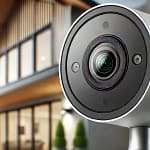Smart home setup from scratch can seem daunting, but the right approach can make it a seamless and enjoyable process. This guide will walk you through each step, from choosing the right devices to integrating them into a cohesive system.
Step 1: Determine Your Needs and Budget
Before you purchase any devices, identify what you want to achieve with your smart home. Do you want to enhance security, increase convenience, save energy, or all the above? Establishing your goals will help you choose the right devices.
Example Needs and Devices
- Security: Ring Video Doorbell, Arlo Pro 4 Security Cameras
- Convenience: Amazon Echo, Google Nest Hub
- Energy Savings: Ecobee Smart Thermostat, Philips Hue Smart Bulbs
Selecting a smart home ecosystem is crucial because it determines the compatibility of your devices. Amazon Alexa, Google Assistant, and Apple HomeKit are the three major ecosystems. Each has its strengths, so choose one that aligns with your needs and existing devices.
Example Ecosystem Hubs
- Amazon Alexa: Echo Dot, Echo Show
- Google Assistant: Google Nest Mini, Nest Hub Max
- Apple HomeKit: Apple HomePod Mini, Apple TV 4K
Step 3: Set Up a Reliable Home Network
A reliable Wi-Fi network is the backbone of a smart home. All your devices depend on a stable internet connection to function correctly. Here’s how to ensure your network can handle the load:
Router Placement: Position your router centrally to provide even coverage throughout your home. Avoid placing it in areas with heavy obstructions or interference.
Network Bandwidth: Ensure your internet plan provides sufficient bandwidth to support multiple devices. High-speed plans (100 Mbps or more) are recommended for larger smart home setups.
Mesh Wi-Fi Systems: Consider a mesh Wi-Fi system for larger homes or those with dead zones. Systems like Google Nest Wi-Fi or Eero use multiple access points to provide seamless coverage.
Network Security: Protect your network with strong, unique passwords. Enable WPA3 encryption and regularly update your router’s firmware to protect against vulnerabilities.
Example Home Network Devices
- Routers: Eero Pro 6, Google Nest Wifi
- Wi-Fi Extenders: TP-Link RE650, Netgear Nighthawk X6
Smart lighting is one of the easiest ways to begin your smart home journey. It’s versatile, easy to install, and can significantly enhance your home’s ambiance and energy efficiency.
Example Lighting Devices
- Smart Bulbs: Philips Hue, LIFX A19
- Smart Switches: Lutron Caseta, TP-Link Kasa Smart Light Switch
Smart thermostats help you save energy and maintain a comfortable home environment by learning your schedule and preferences.
Example Smart Thermostats
- Smart Thermostats: Nest Learning Thermostat, Ecobee Smart Thermostat
Enhancing your home security with smart locks and cameras provides peace of mind and control over who enters your home.
Example Security Devices
- Smart Locks: August Smart Lock Pro, Schlage Encode
- Smart Cameras: Ring Stick Up Cam, Arlo Ultra 2
Step 7: Add Smart Plugs and Outlets
Smart plugs and outlets allow you to control non-smart devices remotely, adding flexibility and convenience to your smart home.
Example Smart Plugs and Outlets
- Smart Plugs: TP-Link Kasa Smart Plug, Wemo Mini Smart Plug
- Smart Outlets: iDevices Wall Outlet, Leviton Decora Smart Outlet
Step 8: Automate with Sensors
Smart sensors can trigger actions based on environmental changes, such as turning on lights when motion is detected or adjusting the thermostat when windows are opened.
Example Sensor Devices
- Motion Sensors: Philips Hue Motion Sensor, Samsung SmartThings Motion Sensor
- Contact Sensors: Aqara Door and Window Sensor, Ring Alarm Contact Sensor
Most smart home ecosystems offer a single app to control all your devices, making it easier to manage and automate your home.
Example Smart Home Apps
- Amazon Alexa App: Control and automate Alexa-compatible devices.
- Google Home App: Manage Google Assistant-compatible devices.
- Apple Home App: Control HomeKit-compatible devices.
Conclusion: Creating a Cohesive Smart Home System
Following these steps, you can create a smart home system where all devices interact seamlessly. For example, when you leave the house, your smart lock can trigger your security cameras to start recording, your thermostat to lower the temperature, and your lights to turn off. When you return, your smart lock can trigger your lights to turn on and your thermostat to adjust to your preferred temperature.
Integrating these devices into a single ecosystem allows them to work together, providing convenience, security, and energy efficiency. With each step, you’ll build a more intelligent and responsive home tailored to your needs.
FAQs About Setting Up a Smart Home
What is a smart home hub, and do I need one?
A smart home hub is a device that connects and controls various smart home devices. It’s essential for seamless integration and communication between different products.
Can I set up a smart home without the internet?
While some devices can operate locally, most smart home systems require internet connectivity for remote access and advanced features.
Are smart home devices safe from hacking?
Smart home devices are generally safe if you follow best practices like using strong passwords and updating the firmware. Read more about cybersecurity best practices here.
How does a smart thermostat save money?
Smart thermostats optimize heating and cooling schedules, reducing energy consumption and lowering utility bills.
Is it difficult to install smart home devices myself?
Many smart home devices are designed for easy DIY installation, often requiring minimal tools and setup time.



